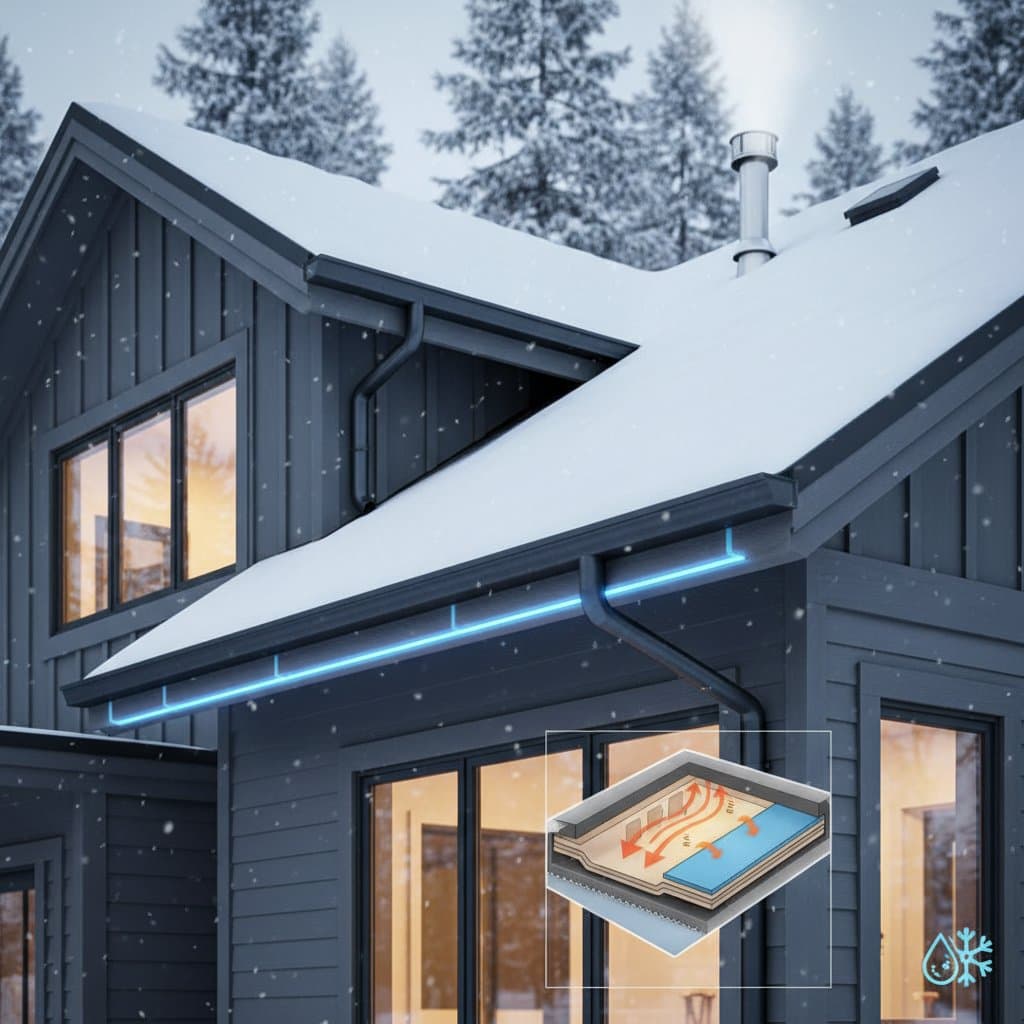Understanding Ice Dams and the Role of Seamless Gutters
Winter weather transforms landscapes into winter wonders, yet it poses significant risks to homes through ice dams. These formations occur when snow melts on warmer roof sections and refreezes at cooler edges, creating barriers that trap water. This trapped water infiltrates shingles, damages insulation, and causes interior leaks. Homeowners can mitigate these issues effectively with seamless gutters, which facilitate uninterrupted drainage even in subzero temperatures.
Seamless gutters minimize vulnerabilities like clogs and leaks that exacerbate ice dam problems. By ensuring water moves freely from the roof, they interrupt the cycle of buildup and refreezing. This article examines the mechanics of ice dams and outlines steps to integrate seamless gutters into a robust winter protection strategy.
1. The Mechanics of Ice Dam Formation
Ice dams develop due to temperature differentials across the roof surface. Heat escaping from an inadequately insulated attic warms the upper roof, causing snow to melt into liquid water. As this water flows downward, it encounters the colder eaves and solidifies into ice, forming a dam that backs up subsequent meltwater.
Contributing factors include insufficient attic ventilation, which traps warm air, and obstructed gutters that hinder drainage. Addressing these elements reduces meltwater volume and improves flow. Seamless gutters enhance this process by providing a continuous channel that resists ice adhesion.
2. Advantages of Seamless Gutters Compared to Sectional Systems
Sectional gutters consist of multiple pieces joined together, creating seams where debris accumulates and ice forms easily. These joints weaken over time, allowing leaks and blockages that promote dam development. In contrast, seamless gutters form from a single aluminum sheet, custom-shaped on-site to match the roofline precisely.
This design eliminates most seams, reducing debris traps and ensuring consistent water velocity. Water channels swiftly into downspouts, minimizing exposure to freezing edges. Select gutters with a capacity of at least five inches wide for homes in snowy regions to handle heavy melt volumes.
3. Enhancing Roof Insulation and Ventilation
Optimal gutter performance depends on a well-insulated and ventilated attic. Install rigid foam board or blown-in cellulose insulation to a depth of 12 to 15 inches, targeting an R-value of 49 or higher in cold climates. This barrier prevents heat transfer to the roof deck, limiting uneven melting.
Incorporate soffit and ridge vents to promote airflow, expelling warm, moist air before it condenses. Aim for one square foot of ventilation per 150 square feet of attic space. Seamless gutters complement these measures by managing any residual meltwater, forming an integrated system that maintains roof integrity.
4. Establishing a Year-Round Gutter Maintenance Routine
Seamless gutters demand less frequent cleaning than sectional types, yet regular attention prevents minor issues from escalating. Schedule inspections in spring and fall, removing leaves, pine needles, and sediment with a soft brush or low-pressure washer. Before winter arrives, flush the system thoroughly to confirm clear paths for meltwater.
Consider micro-mesh gutter guards tailored for seamless installations; these screens filter particles larger than 0.01 inches while permitting water passage. Professional cleaning services can access high or complex areas safely, ensuring comprehensive protection. Consistent maintenance extends gutter lifespan and bolsters ice dam resistance.
5. Incorporating Roof and Gutter Heating Solutions
In regions with prolonged freezes below 20 degrees Fahrenheit, supplemental heating prevents ice solidification. Install self-regulating heat cables along the roof edge, in gutters, and downspouts; these cables adjust output based on temperature, activating only when needed. Position them in a zigzag pattern on the lower two feet of the roof for even coverage.
Pair heating cables with seamless gutters to leverage their smooth surfaces for uniform heat distribution. Use energy-efficient models connected to a GFCI outlet and controlled by a snow sensor or thermostat. This setup melts ice proactively without excessive power use, preserving gutter functionality during storms.
6. Selecting and Collaborating with Expert Installers
Proper installation demands accuracy, as even minor misalignments impair drainage. Engage certified professionals who use on-site extrusion machines to fabricate gutters from 0.027-inch thick aluminum, ensuring durability against expansion and contraction. Request a slope of one-fourth inch per 10 feet toward downspouts for optimal flow.
During consultation, have installers assess your roof pitch, eave length, and existing drainage patterns. They should recommend downspout spacing every 30 to 40 feet and secure hangers every two feet to support snow loads. Expert input identifies synergies with insulation upgrades, maximizing overall system effectiveness.
7. Post-Installation Monitoring and Adjustments
After setup, observe the gutters during initial winter events. Check for rapid water clearance and absence of icicle formation along the fascia. Measure downspout output during rain to verify full capacity; slow flow may indicate needed tweaks in alignment or cleaning.
Document performance with photos and notes, sharing them with your installer if issues arise. Annual professional inspections catch wear early, such as corrosion or loose brackets. Proactive monitoring sustains the system's reliability, preventing ice dams year after year.
Implementing Your Ice Dam Prevention Plan
Initiate your protection strategy by consulting local installers for a site evaluation and quote. Budget for seamless gutters at $8 to $12 per linear foot, including labor, viewing it as an investment that averts repair costs averaging $1,000 to $5,000 per ice dam incident. Combine installation with attic improvements for compounded benefits.
This comprehensive approach not only halts ice dam formation but also enhances home value and energy efficiency. With seamless gutters in place, winter becomes a season of enjoyment rather than apprehension, securing your property against nature's challenges.
